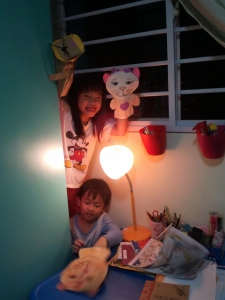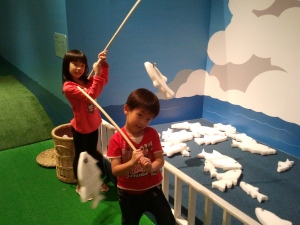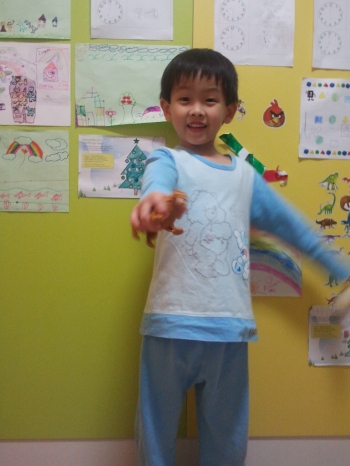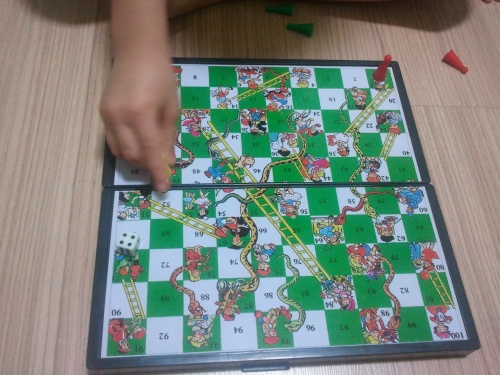My sister-in-law told me that she ironed her clothes when she was only five years old. She was brought up in a family of 5 children.
Hence, every time I iron clothes, I would think of her ironing when she was my daughter’s age. Even though I do not need ironing help from my kids, I would still think if I should expose her to ironing at such a young age. Will she be able to handle the heat, the ironing strokes, the weight of the iron, etc?
However, I know young kids love to help out around the house. And I shall let them handle some simple chores so as to expose them to how things are being cleaned, wiped, mopped, swept, washed, and many others. It will serve as a skill exposure as well as fun learning for them.
So far, I have let them help out in the below chores which I think they are able to handle well:
1) Sweep the floor
They have helped to sweep the floor around the house. The first few times are more of sweeping the dust AROUND the house rather than into the dustpan.
Even if some things do go into the dustpan, they seldom end up correctly into the bin. You just have to teach them patiently and sweep thoroughly once again when they are asleep.
Appropriate age: 4 years and above
2) Wash the dishes

You have to separate out the lighter bowls and cutlery for them to wash. They may not be ready to handle the heavy pots and pans right now.
The idea is to let them try out how to dispense the detergent onto the dish sponge. Next, spread the detergent on the surface of the sponge evenly. Then apply onto the dishes on all surfaces including the exterior of the bowls (this step they will be very thorough and can easily soap for more than a minute for a small bowl). After that, they will wash the bowl under the tap, with one hand still holding the soapy sponge. That tickles me as I have not expected them to still hold onto the soapy sponge when rinsing the dishes.
Appropriate age: 4 years and above
3) Wash the teddies
I let my kids help to wash their own teddies and their favourite bolsters.
They put in the soap, on the tap, learn how to wash the surface of the teddies as though they are bathing them. They get to see how dirty the soapy water is.
After which they pour away the water and rinse and squeeze a few times till there are not much bubbles left. To speed up the drying, we put them into a big towel and spin dry in the washer. Finally, they helped out with the hanging of the bears and bolsters for airing under the sun.
Appropriate age: 3 years and above
4) Sewing

I believe my girl is able to handle the needle and thread at 6 years old. My boy would not be ready now.
Over the weekends, I did some animal felt craft with my kids, and when it came to the blanket stitches, I took over. As kids love to learn new things, I showed my girl how to sew the blanket stitch and let her try it out on her own. At first, she was too quick in pulling the needle and the thread came out loose. I love it that she learnt about the way to handle needle and she tried out a few stitches before she passed it back to me. So, there she gains another experience!
Appropriate age: 6 years and above
5) Cooking

There are many steps in the process of cooking. I am still not comfortable in letting my kids try out the cutting process where they have to handle knives. But the washing of vegetables, peeling, beating eggs are definitely more manageable. I have let them play around with making sushi, making jelly, putting the toppings on a pizza. You will be surprised how much they are able to help out.
Appropriate age: 4 years and above
Kids love to help, and love to try new things. There is no better time than now to let them learn while having fun.
As for ironing, I shall look into that when my girl turns 7 next year.
Do you have other simple chores for your kids too? Tell me about them!














